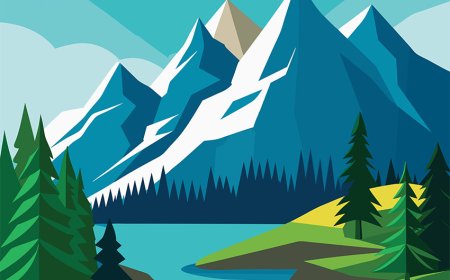Pangaea Explained for Students Supercontinent of Earth’s Past
Learn about Pangaea, the supercontinent that once joined all land on Earth. Discover its history, importance, fun facts, vocabulary, and quiz
🌟 Introduction
Millions of years ago, the continents we know today were not separate. Instead, they were joined together in one giant landmass called Pangaea. This "supercontinent" existed about 335 million years ago and began breaking apart around 175 million years ago. The idea of Pangaea supports the theory of plate tectonics and continental drift, showing that Earth's surface is always changing. Fossils, rock layers, and the shapes of the continents give us clues that Pangaea once existed. Learning about Pangaea helps us understand Earth's history, evolution of life, and how continents drift to where they are today.
🔍 What is Pangaea?
Pangaea was a massive supercontinent that included almost all of Earth's land. It stretched from pole to pole and was surrounded by a vast ocean called Panthalassa. The name comes from Greek words meaning "all Earth."
Evidence for Pangaea includes:
-
The "fit" of continents, like South America and Africa.
-
Fossils of the same plants and animals found on continents now separated by oceans.
-
Similar rock formations and mountain ranges found on different continents.
🌍 Why is Pangaea Important?
-
Proof of Continental Drift: Pangaea provided strong evidence that continents move over time.
-
Earth's History: It explains past climates, fossils, and how species spread.
-
Science Connections: It supports the theory of plate tectonics, a key idea in geology.
-
Modern Relevance: Helps scientists predict how continents may continue to move in the future.
🧪 Everyday Examples
-
Matching fossils, such as Mesosaurus (a small reptile), are found in both South America and Africa, proving the lands were once connected.
-
Coal deposits in Antarctica show that the continent was once part of a warmer region of Pangaea.
-
The Appalachian Mountains in the U.S. and the Caledonian Mountains in Europe line up as if they were once part of the same range.
✨ Fun Facts
-
Pangaea was not the first supercontinent-others like Rodinia existed even earlier.
-
Alfred Wegener first proposed the idea of continental drift in 1912, using Pangaea as evidence.
-
If you look at a world map, the "puzzle-piece" fit of South America and Africa is one of the clearest signs of Pangaea.
📌 Key Takeaways
-
Pangaea was a supercontinent that existed millions of years ago.
-
Fossils, rocks, and shapes of continents prove it once existed.
-
It supports the ideas of continental drift and plate tectonics.
-
Earth's continents are still moving today, slowly changing the map.
🐾 Kid-Friendly Summary
Long ago, all the continents were stuck together in one giant land called Pangaea. Over millions of years, the pieces drifted apart to form the continents we see now.
📚 Vocabulary Words
-
Pangaea: A supercontinent that contained most of Earth's land.
-
Supercontinent: A very large landmass made of joined continents.
-
Continental Drift: The movement of continents across Earth's surface.
-
Plate Tectonics: The theory explaining how Earth's plates move.
-
Panthalassa: The vast ocean that surrounded Pangaea.
-
Fossil Evidence: Remains of plants and animals that show past connections.
-
Alfred Wegener: Scientist who proposed continental drift.
-
Geology: The study of Earth's rocks and processes.
-
Mountain Range Match: Mountains on different continents that line up as evidence.
-
Earth's Crust: The outer solid layer of Earth.
🧠 Interactive Quiz on Pangaea
- Pangaea was
A. A small island
B. A supercontinent
C. A volcano
D. An ocean - The ocean surrounding Pangaea was called
A. Atlantic
B. Pacific
C. Panthalassa
D. Indian - Who proposed the idea of continental drift?
A. Isaac Newton
B. Alfred Wegener
C. Albert Einstein
D. Charles Darwin - Which two continents fit together like puzzle pieces as evidence for Pangaea?
A. Asia and Europe
B. South America and Africa
C. North America and Antarctica
D. Australia and Greenland - Coal in Antarctica proves that
A. It was always frozen
B. It was once warmer and part of Pangaea
C. Antarctica has no fossils
D. It formed in the ocean



















































